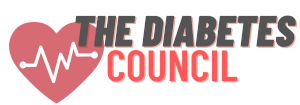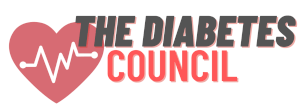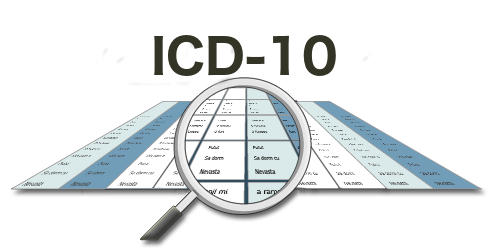Contents
Today, around 1 in 10 Americans, or 38 million people, live with diabetes; approximately 90-95% are type 2 diabetes. For anyone experiencing diabetes, self-education is the pillar for treatment. Diabetes is unique as it is a disease that depends not just on doctors but also on self-management for treatment. Usually, this care also involves trial and error.
Self-management takes work for patients. It is also where hospital and nursing issues become paramount, as healthcare teams herein bear a fundamental role in educating and devising effective strategies. It ensures greater autonomy for diabetic patients in their everyday management of the disease.
Six key strategies should be on the radar for healthcare workers assisting diabetic patients. These strategies ensure that patients are motivated in their treatment processes, which includes adapting to lifestyle changes, having increased confidence in themselves, and acquiring adequate skills and knowledge in their self-management. Diabetes is a disease that involves a great deal of vulnerability, so it is vital that patients feel they are being cared and supported for.
Personalized Education Strategies
The situations of each diabetic patient are different from one another, as each has different lifestyles, cultural backgrounds, literacy levels, personal goals, and so on. A personalized strategy specifically tailored to each patient guarantees that they are being understood and looked out for. It is the key to a high-quality treatment experience.
Usually, a personalized approach means that patients are being reached out to on a personal level – that is, within the context of their direct physical and virtual communities. It entails the need to understand them as individuals and learn how they interact with the world on a daily basis. These include recognizing (and prioritizing) individual needs. For example, awareness of a patient’s medication profile is critical to ensure that their diabetic medications are effective, as the patient’s other prescribed medications can potentially influence weight, glycemic control, and cholesterol levels – it is pivotal that these are carefully monitored.
The effectiveness of personalized education strategies is clear. In 2015, a joint clinical trial of a personalized, patient-centered, diabetes-treatment strategy was conducted between Omada Health and Humana Medicare under the Prevent program. It was found that 85% of the total 491 patients remained at an active engagement level and had an average 8.7% loss of body weight after six months.
 Multidisciplinary Approaches
Multidisciplinary Approaches
Healthcare workers are not just doctors and nurses, but also dietitians, nutritionists, diabetic educators, and many other allied health professionals. They should all be involved in providing comprehensive care for patients.
Each professional has their specific skills and expertise, to which they can maximize and make their contribution to making sure that all the aspects of diabetes care are covered, from medication to small dietary changes to whole lifestyle changes.
Coordinated care by a multidisciplinary team not only leads to increased satisfaction among patients but even reduces stress on healthcare systems. Diabetes, as we all know, carries significant healthcare costs, so diversifying workloads naturally also reduces challenges for both the patient and the hospital.
Making Use of Digital Technology
We live in the digital age, so digital tools should be leveraged as much as possible for patient care. Apps, online platforms, and wearable devices are all instruments that provide and enhance diabetes education and self-management. These tools can assist in tracking glucose sugar levels, recording weight, diet, and exercise, as well as serving as reminders for medication adherence. With that is also the provision of real-time advice and educational content that specifically caters to each patient and their particular circumstances.
Using digital tools can also empower patients who are either personally underresourced (e.g. elderly people) or live in underresourced communities (e.g. low-income backgrounds). In particular, digital tools have been effective in overcoming language barriers for those who may not be proficient in English.
For example, the Dulce Digital project created a low-cost short-messaging service (SMS) program that provided educational and motivational messages, medication reminders, and glucose monitoring for patients. The program did not require a smartphone and offered messages in both English and Spanish, with the majority choosing Spanish-language texts since the majority of patients were of Hispanic or Mexican background. After six months, the study found an average 1% reduction in serum hemoglobin (HBA1C) compared to the usual group.
Interactive Engagement Methods
Workshops, group sessions, and hands-on practicals are key ways of interactive learning that can be adopted by patients. Forging interaction with patients is important for maintaining and improving the physical and mental well-being of those with diabetes.
An interactive engagement model, especially with collaborative group sessions, facilitates the reinforcement of learning, encourages questioning, and allows peer-to-peer support between patients, catalyzing motivation and empowerment. Compared to one-on-one counseling, group sessions led to greater satisfaction and even health improvements for patients.
Problem-Solving Programs
Problems inevitably arise when making major lifestyle changes. Yet these situations should not derail the progress of patients – they should be taught how to identify problems and find solutions.
Good solutions should always suit each individual and their specific problem, as it is a key part of self-management. And occasionally it requires some degree of creativity. According to the Association of Diabetes Care and Education Specialists (ADCES), problem-solving requires three steps:
- Identifying the problem – What is the problem? Changing medications, inadvertently eating unhealthy foods on a holiday or special occasion, or starting a new job are all challenges that arise throughout life.
- Finding solutions – Are there any solutions? Rectifying the problem means using the knowledge and experience one has and utilizing available support networks.
- Taking action – Which is the best solution? The best strategy should be the one applied to solve the problem; if that is ineffective, other solutions can be used instead.
The best way to prevent nasty situations such as hyperglycemia or hypoglycemia is through problem-solving. It is essential for effective self-management and surmounting inevitable roadblocks.
 Flexible Exercise Programs
Flexible Exercise Programs
Finally, maintaining regular physical exercise is imperative for diabetic treatment. While it seems self-evident on the surface, it is not as simple as we might think it to be. Patients may not always have the motivation or the space to engage in regular physical activity. To put this into perspective, a study conducted by Dr. Stephan Praet found that the dropout rates for a 12-month, three-day-per-week brisk walking program for diabetic patients stood at an alarming 63%.
Planned and highly structured routines require greater commitment and sustained motivation from patients, and frankly this is not easy. An alternative method is incorporating exercise that has varied intensities across the week. This avoids overuse, burnout, and other injuries, which are usually the primary factors that lead to a decline in motivation among patients. As always, healthcare workers should be the main encouragers and recommenders in prescribing the appropriate duration, intensity, and types of exercises for patients.
These are obviously not all the available strategies, but they can potentially serve as a basic framework to ensure that diabetic patients can have the best quality care and support they need.





